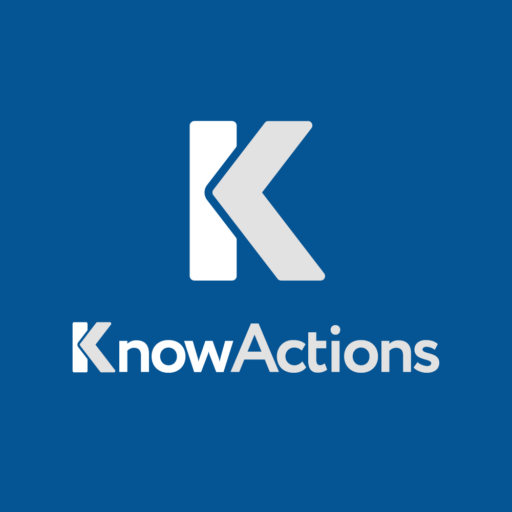A staggering 90% of employees report that at least one team member fails to meet deadlines, track tasks, or prioritize work effectively. This statistic highlights the critical need for accountability in teams, especially in remote settings1. As businesses adapt to new work paradigms, fostering accountability has become paramount for maintaining team dynamics and shared responsibility.
The shift towards remote work has brought unique challenges to team management. With 63% of employers planning to maintain hybrid work models post-pandemic, the importance of accountability in virtual environments cannot be overstated2. Remote teams often face challenges like communication gaps and unclear expectations, which can significantly impact productivity.
Interestingly, remote workers show higher engagement and alignment with company goals when working remotely 20-50% of the time2. This suggests that effective time management strategies and accountability measures can lead to improved team performance in virtual settings.
The consequences of poor accountability are severe. Teams experiencing accountability issues see a 24% decrease in overall performance, highlighting the direct link between accountability and productivity1. Furthermore, employees who rate their manager’s performance poorly are four times more likely to seek new job opportunities, emphasizing the role of leadership in fostering accountability1.
Key Takeaways
- 90% of teams face accountability issues, impacting overall performance
- 63% of employers plan to continue hybrid work models
- Remote work between 20-50% boosts employee engagement
- Poor accountability leads to a 24% decrease in team performance
- Effective leadership is crucial for maintaining accountability
- Time management and clear expectations are vital in remote settings
Understanding the Importance of Accountability in Remote Work
Remote work has surged in popularity, with 52% of employees ready to switch from on-site to remote roles3. This trend calls for a fresh approach to accountability within virtual teams.
Defining accountability in a remote context
In remote settings, accountability means team members meet their commitments and achieve quality results without direct oversight. It encompasses clear goal setting, effective performance tracking, and trust building among team members and leaders.
Benefits of fostering accountability in virtual teams
Remote teams that embrace accountability reap significant advantages:
- Increased productivity and motivation
- Higher employee engagement
- Improved alignment with company goals
- Enhanced trust and collaboration
When employees feel trusted, they exhibit higher motivation, productivity, and engagement, alongside lower stress levels3. Moreover, involving employees in goal setting boosts engagement nearly fourfold3.
Challenges faced by remote teams in maintaining accountability
Remote teams encounter hurdles such as:
- Limited face-to-face interactions
- Communication barriers
- Difficulty in tracking progress
- Lack of commitment documentation
To address these issues, 70% of employers intend to adopt hybrid models4. Establishing clear communication protocols and using remote work tools like Microsoft 365 aids in maintaining accountability4. Regular video conferencing sessions and updates on progress are key to keeping remote teams accountable and fostering trust5.
“Accountability promotes equality by holding all team members to the same standard.”
By tackling these challenges and capitalizing on the benefits, organizations can foster a culture that values both trust and accountability in remote settings5.
Setting Clear Expectations and Goals
Effective goal setting is crucial for remote team success. Research indicates that only half of employees understand their work expectations, leading to performance issues and time wastage6. This ambiguity can result in an 11% drop in employee performance7.
To tackle this, managers should adopt SMART goals: Specific, Measurable, Achievable, Relevant, and Time-bound. This method ensures expectations are clear and achievable, leading to better work outcomes7.
Tracking performance is vital for accountability. Regular check-ins and reviews help keep expectations aligned in real-time7. Managers should leverage project management software or task boards to outline roles and responsibilities, fostering ownership and transparency.
“Clear expectations are the foundation of employee engagement and productivity.”
Effective communication is essential for managing expectations. Good communication can reduce employee turnover8. Managers should schedule regular meetings for project updates and one-on-one sessions for individual concerns8.
| Goal Setting Strategy | Benefits |
|---|---|
| SMART Goals | Clarity, Measurability, Achievability |
| Regular Check-ins | Real-time Alignment, Continuous Feedback |
| Project Management Tools | Transparency, Task Ownership |
By setting clear expectations and using effective goal setting and performance tracking, remote teams can enhance engagement, lower turnover, and increase productivity in the virtual workplace.
Implementing Effective Communication Strategies
Effective communication is essential for remote teams to excel. It promotes open communication and enhances team dynamics, leading to better collaboration and productivity.
Utilizing Various Communication Channels
Remote teams should use a variety of communication tools to meet diverse needs. Video conferencing platforms offer face-to-face interactions, while instant messaging enables quick updates. Cloud-based collaboration tools make file sharing and project management seamless9.

Establishing Regular Check-ins and Updates
Scheduled team meetings and one-on-one sessions are crucial for keeping everyone aligned and addressing personal concerns. These regular sessions help overcome issues like time zone differences and cultural variations that can affect remote communication109.
Encouraging Open and Transparent Dialogue
A culture of transparency is vital for effective team communication. Encourage team members to share their ideas and provide constructive feedback freely. This approach minimizes miscommunication risks and increases motivation911.
| Communication Strategy | Benefits | Challenges |
|---|---|---|
| Video Conferencing | Non-verbal cues, personal connection | Time zone differences, tech issues |
| Instant Messaging | Quick updates, informal interaction | Overreliance on written communication |
| Regular Check-ins | Alignment, individual support | Scheduling conflicts, meeting fatigue |
| Transparent Dialogue | Trust building, idea sharing | Cultural differences, lack of non-verbal cues |
By adopting these strategies, remote teams can overcome communication barriers and foster a more engaged, productive work environment11.
Leveraging Technology for Task Management and Tracking
In today’s remote work landscape, technology is key to improving team dynamics and tracking performance. Modern task management tools have changed how teams work together, leading to better productivity and accountability12.
Using technology has boosted team productivity by 17% over traditional methods. Leaders now find it easier to track tasks and deadlines, with 74% noting improved efficiency12.
Companies like Buffer and Zapier use tools like 15Five, Slack, Asana, and Trello for regular check-ins and goal setting. These platforms help track progress and provide feedback in real-time, promoting accountability13.
| Company | Tools Used | Purpose |
|---|---|---|
| Buffer | 15Five, Slack | Check-ins, goal setting, performance evaluations |
| Zapier | Asana, Trello, Zoom | Progress tracking, goal setting, real-time feedback |
| GitHub | Custom platform | Transparent visibility of contributions and progress |
| Automattic | P2, Slack, Zoom | Communication, collaboration, goal tracking |
These technologies have cut down miscommunication and delays by 89% in organizations. Team members are more engaged, with 62% showing more accountability on collaborative platforms12.
As remote work evolves, AI and automation will likely increase team efficiency by up to 30% in the future. To get the most out of these tools, companies should invest in continuous training and support. This can raise technology adoption rates by 45% among team members12.
Accountability in Teams: Building a Culture of Trust and Responsibility
Creating a culture of accountability within teams is essential for Trust Building and boosting performance. Organizations that focus on accountability tend to meet or exceed their goals by 50%14.
Fostering a Sense of Ownership
Leaders should craft clear mission statements and set SMART goals to encourage ownership. This method can enhance team accountability by 30% and 25% respectively15. Empowering employees to manage their tasks not only enhances outcomes but also strengthens trust within the team.
Encouraging Peer-to-Peer Accountability
Peer accountability is crucial for sustaining high performance. Regular check-ins can increase accountability by 20% and keep teams focused on their goals15. Such practices promote open dialogue and ensure everyone stays on course.
Leading by Example: Management’s Role in Accountability
Leadership Accountability is key in shaping the company culture. When leaders exhibit the behaviors they expect from their teams, they deeply impact their followers. Acknowledging and rewarding achievements can elevate accountability by 35%, motivating team members to aim for excellence15.
Adopting these strategies helps organizations build resilient, engaged, and successful teams. Effective delegation can increase team accountability by 28%, enabling members to own their tasks and contribute to the company’s success1514.
Providing Regular Feedback and Recognition
Regular feedback and recognition are essential for boosting accountability in remote teams. Open Communication is key, ensuring team members are well-informed about goals and progress16. Continuous feedback systems help leaders pinpoint areas for growth and keep teams motivated.

Leadership Accountability shines when managers set clear, SMART goals for their teams16. This method not only boosts accountability but also builds trust and a sense of responsibility within the team17.
Recognizing high accountability levels can greatly increase motivation and team engagement16. Celebrating team successes, big or small, instills pride and keeps team members committed to their goals16. Acknowledging achievements leads to better performance and a more positive workplace17.
“Recognition is the fuel that drives accountability and performance in remote teams.”
To boost team accountability, consider these strategies:
- Schedule regular one-on-one meetings for personalized feedback
- Create a responsibilities chart to clarify roles and expectations
- Utilize peer-to-peer accountability partnerships for mutual support
- Provide constructive feedback to help individuals grow and improve
By promoting a culture of open communication, regular feedback, and recognition, leaders can enhance accountability, productivity, and create a successful remote work environment17.
Establishing Performance Metrics and KPIs
Setting clear performance metrics and Key Performance Indicators (KPIs) is vital for remote team success. KPIs are measurable values that reflect how well a company meets its goals. They track financial health, monitor progress, and alert us to potential issues early18.
Defining Measurable Goals for Remote Team Members
When setting goals for remote teams, adopt the SMART model: Specific, Measurable, Achievable, Relevant, and Time-bound. This method simplifies KPI tracking and measures progress effectively19. Focus on outcomes over outputs to encourage creativity and innovation in remote work settings.
Implementing Performance Tracking Systems
Effective performance tracking requires identifying data sources, setting targets, and analyzing performance data. Use dashboards for easy visualization and regularly review outcomes19. Technology solutions offer real-time visibility and enhance data accuracy in KPI tracking19.
Using Data-Driven Insights to Improve Accountability
Data-driven insights from KPI reports offer deeper understanding, helping teams spot trends and make informed decisions18. Encourage a culture of accountability by assigning KPI ownership to individuals or teams. This clarity in roles motivates employees to strive for results and find innovative ways to improve19.
| KPI Type | Description | Example |
|---|---|---|
| Quantitative | Measurable facts (statistics, percentages) | Sales growth rate |
| Qualitative | Based on human interpretations | Customer satisfaction |
| Lagging | Measure past performance | Revenue generated |
| Leading | Predict future success | New leads generated |
By setting clear performance metrics and KPIs, implementing strong tracking systems, and leveraging data-driven insights, remote teams can boost accountability and achieve success in their virtual work environments.
Promoting Work-Life Balance in Remote Settings
Remote work introduces distinct challenges to Team Dynamics. Achieving a balance between professional and personal life is essential for sustained success. Over 75% of remote workers enjoy enhanced work-life balance thanks to flexible schedules20. This adaptability enables teams to navigate various time zones and personal commitments.
Open Communication is crucial for maintaining work-life balance. Regular check-ins foster a culture of transparency and streamline workflow21. Teams that prioritize discussing work-life balance during meetings see a 56% increase in accountability20.
It’s vital to establish clear boundaries between work and personal life. Encouraging dedicated workspaces reduces distractions and enhances focus21. This strategy, combined with regular breaks, sustains productivity and engagement.
Technology plays a pivotal role in optimizing remote work. Tools like EmpMonitor offer real-time insights into employee engagement and productivity21. Platforms such as Asana and Trello can elevate task completion rates by up to 30%20.
Enhancing work-life balance benefits not only personal well-being but also job satisfaction and retention. Remote workers are 47% more likely to rate their job satisfaction highly compared to those working on-site20. This balance cultivates a positive Team Dynamic, propelling long-term success in remote environments.
Addressing Accountability Challenges in Hybrid Work Environments
The shift towards hybrid work models is now widespread. A recent survey shows that 51% of employers plan for employees to return to the office but with the flexibility to work remotely part-time. Conversely, only 8% of employees are ready to return full-time22. This change brings new challenges in keeping accountability across varied work setups.
Balancing Accountability Between In-Office and Remote Team Members
It’s essential to ensure equal accountability for in-office and remote workers. Companies can use time and project management tools to build trust and transparency23. This method ensures consistent performance standards, regardless of location, promoting a fair work culture.
Adapting Accountability Strategies for Flexible Work Arrangements
Flexible work setups need customized accountability strategies. By having designated no-meeting days and promoting asynchronous communication, hybrid teams can enhance productivity23. It’s crucial to clearly define roles, responsibilities, and performance expectations for success in these diverse work settings24.
Overcoming Common Pitfalls in Hybrid Team Management
Managing hybrid teams effectively means tackling potential conflicts between remote and in-office workers. Regular team-building activities, both in-person and virtually, can improve collaboration and accountability23. Line managers are key in ensuring effective communication, performance management, and conflict resolution within hybrid teams24. By focusing on these areas, organizations can build a unified work culture that supports team dynamics and resolves conflicts efficiently.


